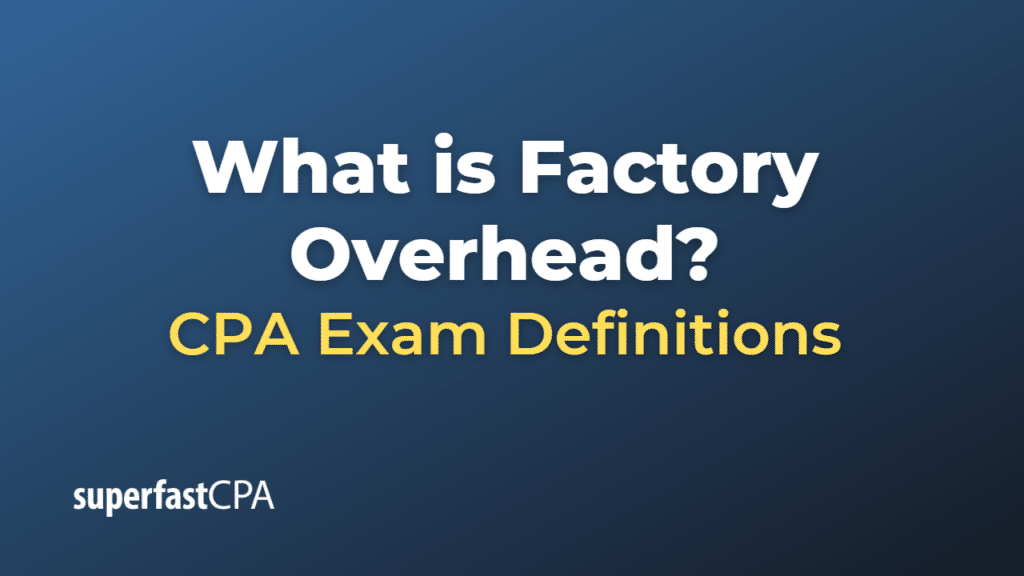Factory Overhead
Factory overhead, also known as manufacturing overhead or factory burden, refers to all the indirect costs incurred during the production process. These are the costs that are not directly tied to a specific unit of production, but they are necessary for the overall production process.
Factory overhead includes a wide range of costs such as:
- depreciation: This includes the depreciation of manufacturing equipment and the factory building itself.
- Utilities: These are costs associated with operating the factory, such as electricity, gas, and water.
- Maintenance: Costs for routine repairs and maintenance of the manufacturing equipment and the factory.
- Factory Management Salaries: Salaries and wages of factory management and staff who do not directly work on the production line but are necessary for the operation.
- Insurance: Costs for insurance related to the factory or manufacturing equipment.
- Property taxes: Taxes related to the property where the factory is located.
- Indirect Materials and Labor: Materials and labor that contribute to the production process but cannot be directly assigned to a specific product.
It’s important to note that factory overhead does not include the direct costs of manufacturing, such as raw materials and direct labor (the workers who are actually making the products). These direct costs are typically accounted for separately.
In cost accounting, factory overhead costs are usually allocated to individual units of output to determine the total cost of production and ultimately the price at which the product should be sold. Different methods can be used for this allocation, such as using a predetermined overhead rate based on direct labor hours, machine hours, or other relevant activity bases.
Example of Factory Overhead
Let’s consider a fictional company, “ShoePro”, that manufactures shoes.
In addition to the direct costs of manufacturing a pair of shoes, such as the cost of leather, soles, laces, and the labor costs for the workers who assemble the shoes, ShoePro also incurs several indirect costs related to its factory.
These indirect costs, or factory overhead, might include:
- Depreciation: ShoePro owns a manufacturing facility and equipment used to assemble the shoes. Each year, a portion of the cost of this facility and equipment is recorded as depreciation expense.
- Utilities: The factory requires electricity to power the machines, heat in the winter, cooling in the summer, and water for the restrooms.
- Maintenance: Occasionally, ShoePro needs to repair a piece of manufacturing equipment or fix a leak in the factory roof.
- Factory Management Salaries: ShoePro has a factory manager and several supervisors who oversee the production process. Their salaries are part of the factory overhead because they aren’t directly involved in assembling shoes.
- Insurance: ShoePro pays for insurance to protect against damage to the factory and equipment, or potential liability issues related to the factory operations.
- Property taxes: ShoePro owns the land where the factory is located, and must pay property taxes to the local government.
These factory overhead costs aren’t tied to a specific pair of shoes, but they’re necessary for ShoePro to manufacture shoes. When ShoePro calculates the cost of its shoes for inventory and cost of goods sold purposes, it will include an appropriate portion of these factory overhead costs in addition to the direct materials and direct labor costs.













